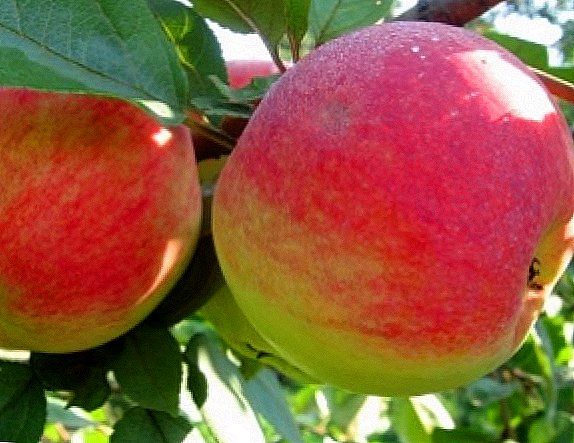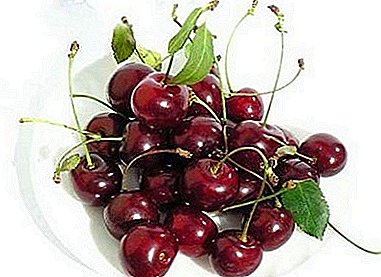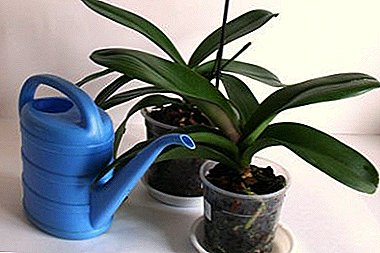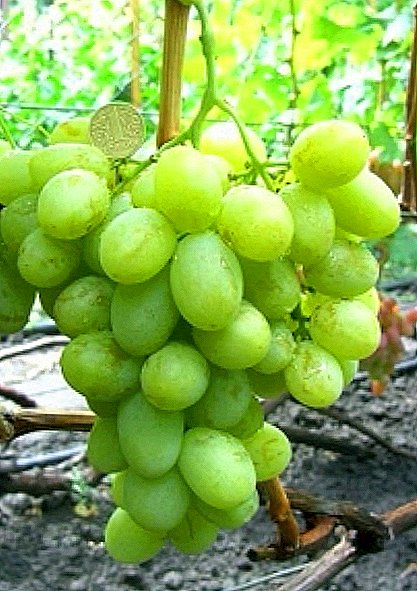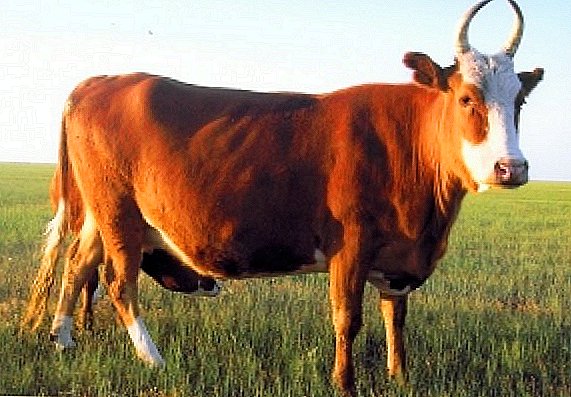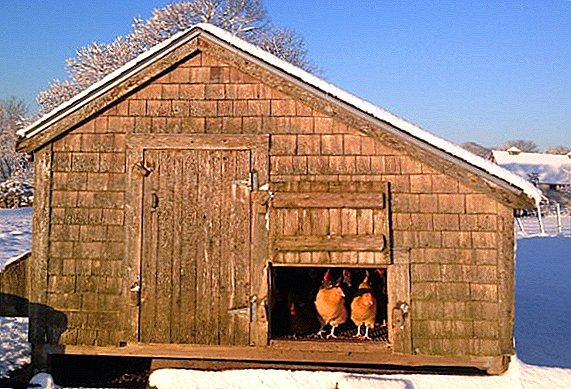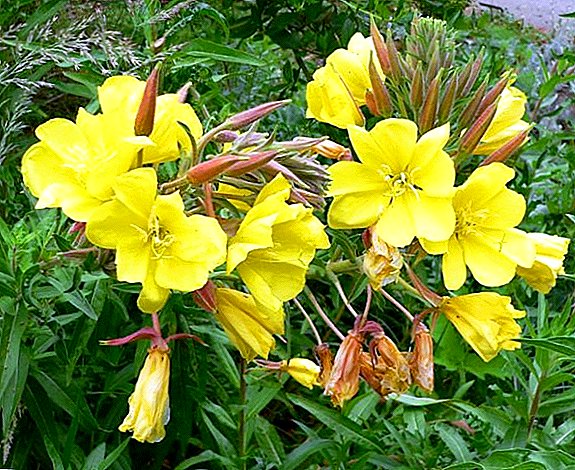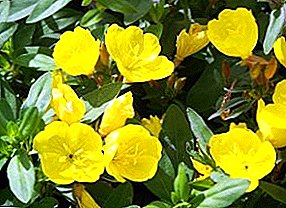 Enotera - This is a perennial flower, which is known by its second name, namely: "night primrose" or "evening candle". The plant deserves such names due to its golden color of buds and abundant bloom in the evenings.
Enotera - This is a perennial flower, which is known by its second name, namely: "night primrose" or "evening candle". The plant deserves such names due to its golden color of buds and abundant bloom in the evenings.
Did you know? The genus enotera includes a large number of annual, biennial and perennial herbal plants.
To care for the golden miracle is not very difficult, and we will prove it in this article.
The main types of enotera
There are about 150 species of evening primies that are in demand with florists. Gardeners especially adore several plant species: Fragrant, Krupnotsvetkovuyu, Bush, Missouri and Tetragonal.
Fragrant
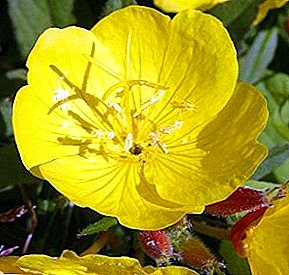 This enotera loves the shadow very much. So the place for planting should be in the shade, or there should be a small shed next to the plant. Enotera Fragrant grows up to 1 m in height and harmonizes perfectly with other flowers due to its growth. The flowers of evening primrose are yellow and large. Especially this kind of fact that it can leave its buds open all day.
This enotera loves the shadow very much. So the place for planting should be in the shade, or there should be a small shed next to the plant. Enotera Fragrant grows up to 1 m in height and harmonizes perfectly with other flowers due to its growth. The flowers of evening primrose are yellow and large. Especially this kind of fact that it can leave its buds open all day.
Large-flowered
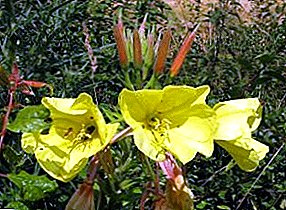 Enotera grandiflora also called two years. It is one of the most popular species in the culture of donkeys and grows up to 2 meters. Flowers are bright yellow with a pleasant aroma, which is especially felt in the evenings or at night.
Enotera grandiflora also called two years. It is one of the most popular species in the culture of donkeys and grows up to 2 meters. Flowers are bright yellow with a pleasant aroma, which is especially felt in the evenings or at night.
Did you know? Most likely it is called an asshole because the evening primrose leaves look like donkey's ears.
Shrub
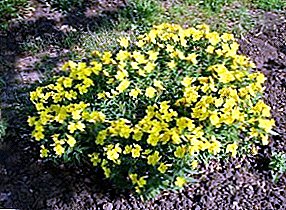 This plant differs from other species of enotery in that it grows up to 90 cm in height and has strong, well-branched stems with yellow twigs. Flowers make flowers attractive to the enoteru shrub, especially in the fall, when the leaves of the plant become blood-red.
This plant differs from other species of enotery in that it grows up to 90 cm in height and has strong, well-branched stems with yellow twigs. Flowers make flowers attractive to the enoteru shrub, especially in the fall, when the leaves of the plant become blood-red.
Missouri
 Homeland of this variety - the south of North America. This is a perennial herb that reaches up to 40 cm in height. This low-growing variety of enotera has large single flowers that reach up to 10 cm in diameter. The shape of the flowers resemble cups. The enotera missouri is unusual in that it blooms all summer long until frost. The aroma is delicate and gives citrus notes.
Homeland of this variety - the south of North America. This is a perennial herb that reaches up to 40 cm in height. This low-growing variety of enotera has large single flowers that reach up to 10 cm in diameter. The shape of the flowers resemble cups. The enotera missouri is unusual in that it blooms all summer long until frost. The aroma is delicate and gives citrus notes.
Quadrilateral
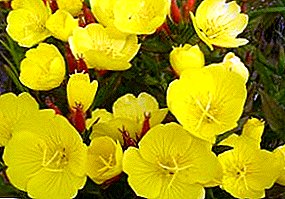 Homeland of this plant species is the east of North America. The enotera quadrangular grows up to 70 cm in length and has yellow thyroid inflorescences about 45 cm in size. These are frost-resistant plants reproduce by dividing the bush. Flowering night primrose tetrahedral from June to August.
Homeland of this plant species is the east of North America. The enotera quadrangular grows up to 70 cm in length and has yellow thyroid inflorescences about 45 cm in size. These are frost-resistant plants reproduce by dividing the bush. Flowering night primrose tetrahedral from June to August.
Features of landing and reproduction of enotery
Planting evening primrose will not be difficult for florists, as well as caring for a plant. It is from the seeds that the life of the plant begins. The main thing is to choose the right place for planting enotera seeds. We will discuss this in the following sections.
Sowing seeds in open ground
Enotera loves sunny places, so if your site is in the south side, the seeds are planted directly in open ground. Growing an enoteru from seeds is not very easy, as the plant requires certain conditions.
The seeds of evening primrose are collected until the end of September, but if the gardener for some reason did not do this, then the ants simply spread them around the site.
Important! Enotera does not tolerate stagnant moisture, so the best place for planting will be loam and sandy soil.
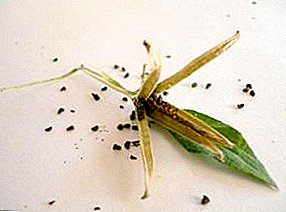 Immediately before planting the seeds, the soil must be fertilized with potash-phosphorus top dressing and humus. The plot for planting is dug up one shovel deep and watered abundantly. Seeds are sown to a depth of 3 cm and covered with soil.
Immediately before planting the seeds, the soil must be fertilized with potash-phosphorus top dressing and humus. The plot for planting is dug up one shovel deep and watered abundantly. Seeds are sown to a depth of 3 cm and covered with soil.
Planting primrose seedlings
The enotera can be planted immediately in open ground, but some gardeners germinate seeds for seedlings initially. This is a definite plus, since the flowering of the plant occurs in the first year after planting.
For this, florists plant seeds in pots with peat in February. Cover the pot with a film before the first shoots. Then the film must be removed and watered moderately until the plant has 5-6 leaves. Such seedlings dive into the open ground no earlier than May. The depth of the holes for planting should be at least 50 cm. The distance between the enotery seedlings should be 60 cm. After planting, the soil is moistened.
Did you know? Enotera is one of the plants that can turn an ordinary summer evening into a fairy tale.
Dividing bush
Growing this plant is not limited to seeds. You can use this method, as the division of the bush enotery. In May or early September, the bushes are divided into delenki and transplanted to a new place. Basically choose creeping roots with a growing point.
You can repot throughout the season, even during flowering. Plants are robust and can maintain their appearance without water and soil for several days. After transplantation, roots take root well and grow quickly.
Important! Do not replant the plant during hot periods of summer, as the evening tree may dry out.
The combination of evening primrose with other plants
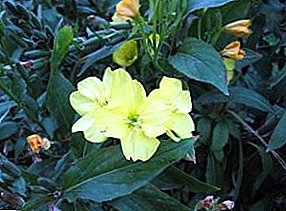 Since evening primrose has very strong roots that develop rapidly, the flowers can cause inconvenience to some plants if they are planted at an insufficient distance.
Since evening primrose has very strong roots that develop rapidly, the flowers can cause inconvenience to some plants if they are planted at an insufficient distance.
Enotera beautifully and harmoniously look in group plantings. High varieties look great in the background, and at the bottom you can arrange the bells or daylilies.
If you have low varieties of enotery, you can plant them on alpine hills with lobelia.
How to care for the enothera on the site
After planting, evening primrose needs the plant to be properly cared for.
Enotera does not like the constant stagnation of water at the roots, which leads to decay and death of the flower. The flower is watered during the hot and dry periods of summer, as at this time the earth dries out. Young plants require abundant and frequent watering.
In the first year, an enotera does not require fertilizer, since a nutrient substrate was already added to the soil before planting. In the following years of life the plant must be composted. During active flowering and growth, potassium sulfate and wood ash are added to the top dressing.
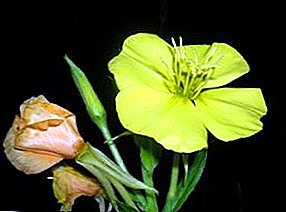 Also, the soil under the plant should be constantly loosened. It nourishes the earth with oxygen. It is also important to remove weeds, as they can halt plant growth.
Also, the soil under the plant should be constantly loosened. It nourishes the earth with oxygen. It is also important to remove weeds, as they can halt plant growth.
Did you know? Evening primrose oil improves women's well-being on critical days, helps maintain body shape, reduces fat deposition in tissues.
Autumn procedures and winter evening enotera
The primrose pruning is carried out once, in the fall, since all above-ground parts of the flower are cut at the soil level.
The plant is frost-resistant and does not need a strong shelter for the winter. After you trim the evening primrose, it will be enough to mulch the earth up to 5 cm high. Peat or compost is used as protection. In the first year, young plants harbor lapniknik. Enotera winters without any problems and practically does not require care during this period.
Resistance to evening primrose disease
Growing and caring for an enothero does not cause any trouble. But these are not the only pluses of a flower. It is also striking in its resistance to diseases and pests. With minimal care, you will not encounter parasites, but there is still one disease that can affect your plant.
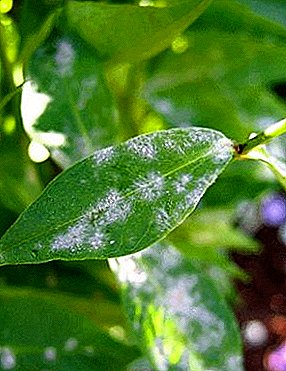 Mealy dew - It is a fungal disease that manifests itself in young plants. White powdery scurf appears on the leaves, shoots and buds. After some time, the plaque gradually darkens, and the affected tissues turn brown. The leaves are deformed and dry. Buds dry up, and not revealed.
Mealy dew - It is a fungal disease that manifests itself in young plants. White powdery scurf appears on the leaves, shoots and buds. After some time, the plaque gradually darkens, and the affected tissues turn brown. The leaves are deformed and dry. Buds dry up, and not revealed.
Before flowering of evening primrose, treat for the prevention of colloidal sulfur. At the first signs of disease, wash the leaves with a solution of soda ash and soap. If you trust chemicals more, you can use drugs such as Scor and Horus.
Did you know? The roots of evening primrose contain a large amount of sugars, starch and inulin, the leaves are rich in vitamin C, they also have an insignificant amount of vitamin A on P.
Enotera is a beautiful plant that is also quite unpretentious to care. If you decide to decorate your lawn with beautiful yellow flowers, this plant is suitable for creating an interesting composition.


